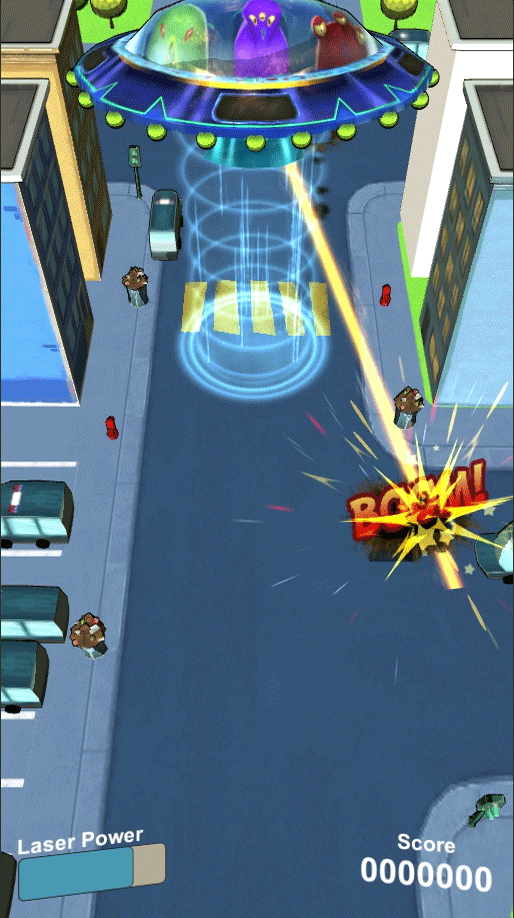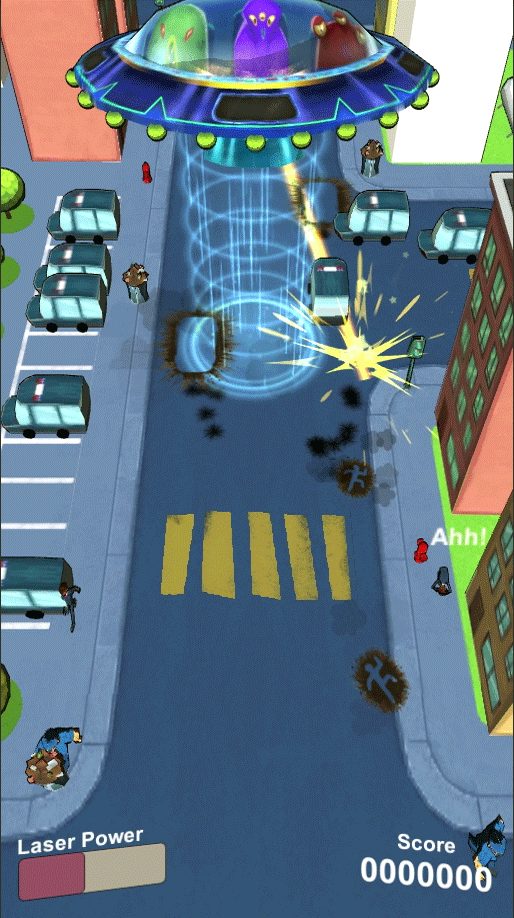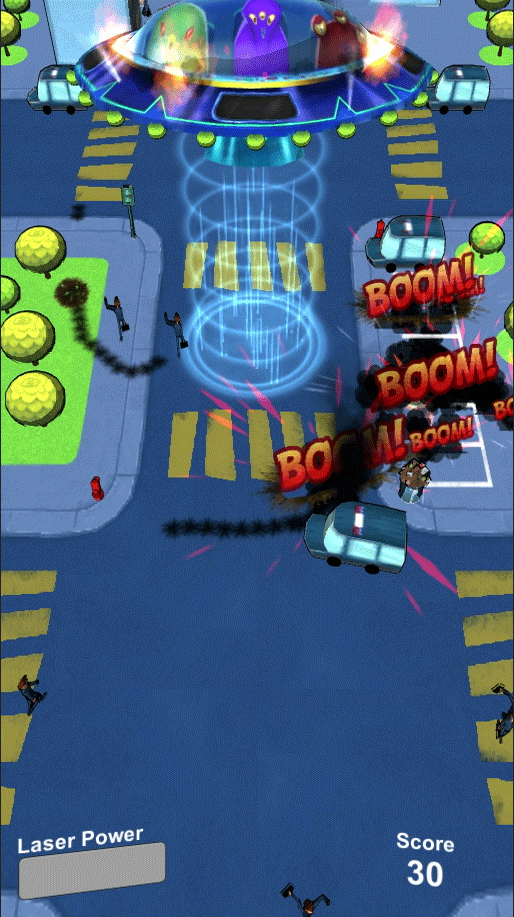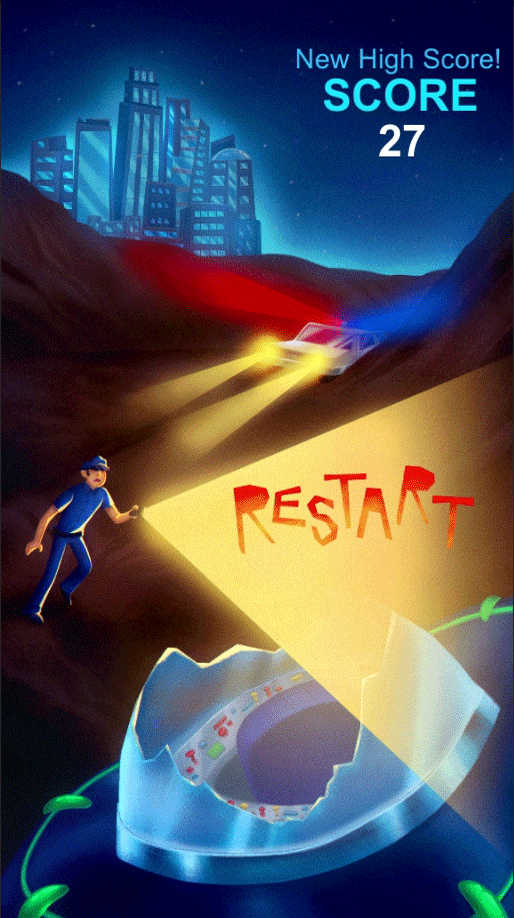Area 51
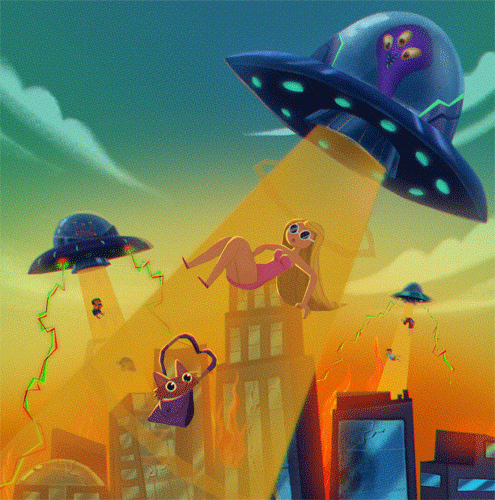
Summer 2014. I’m Game Designer at Gameloft Guadalajara, Mexico. Talking with programmer and colleague Javan Bernal, we get the idea to develop a small concept on our side on the weekends. We wanted to experiment, to prototype gameplay ideas. It has been nearly a year that we were working on updates for Oregon Trail - American Settler, and a feeling of monotony was growing.
Game Concept
My initial intention was simple: take an archetype of game, and turn his concept upside down.
So I took the concept that was very popular at that time of endless runners (Temple Run and Minion Rush were trusting the top grossing charts on iOS and Android). So having a main character moving automatically, and making him avoid obstacles as long as possible to cumulate a certain score and get ressources.


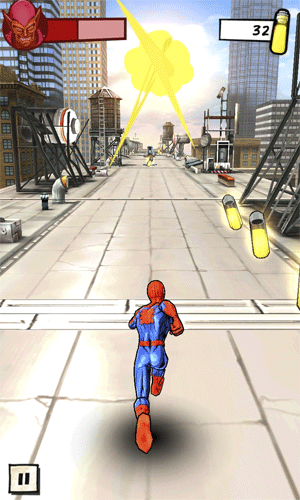

But in our case, the player couldn’t influence the progression, the path, of the “main character”, but had to interact and modify its environment, in order to make him survive longer.
Now I think about it, I realise that Area 51’s idea is pretty close to what my team and I did on the school project Le Royaume: The Bet.
Anyway, this way we made the first concept for what will become Area 51: Extraterrestrials invaders attack the Earth. They fly over big cities in search of humans to capture in their abduction beam (to do whatever experiences involving anal probes).
The player portrays one of the aliens’ flying saucer, placed on top of the screen (top-view camera), moving slowly straight above the streets of a specific city. But the player doesn’t control the ship itself, and can’t influence its progression. However, by touch screen controls, he can guide a laser beam the saucer has.
That laser scares humans and change their trajectory as they usually run away from player’s ship.
The objective of the player is to guide people trajectory into the attraction beam. Player’s score and credits earned at the end of each gameplay sessions are proportional to the number of humans abducted.
But the player needs to be careful to the various dangerous elements in the street that can damage the saucer and fasten the game over:
- If the abduction beam captures something else than humans (cars, road signs, trees, etc.). Player can disintegrate them with the laser.
- Some police officers in the street can shoot on the ship. The player can use his laser to either eliminate them, or scare them so they run away.
Also, by tapping on the spaceship, player can turn the abduction beam on or off.
7th Heaven
After various talks with Javan, we finally agree on the above concept. Javan likes it, but he is not the only one: various colleagues (programmers and artists) listened to our chit-chats at the coffee machine and asked to be part of it. The more, the better!
Here we are, 7 people gathering at my place over several weekends to prototype the game:
- Javan Bernal (Lead Programmer)
- Sergio Sánchez (Programmer)
- Flavio R. Reyes (Programmer)
- Moi-même (Game Designer and Pizza Provider)
- Kelvin Celis (Technical Artist)
- Hugo G. Cárdenas (3D Artist)
- Arianna G. Moreno (2D Artist)
Our Artistic Direction
The first references we gathered with the team were obvious ones: famous movies like Mars Attack, Earth Vs. The Flying Saucers, or Independance Day. To keep a light and funny tone however, we decided to restrain our inspirations to the Tim Burton movie.
Mais Arianna (2D Artist) has always been a big fan of the artistic style from the Hanna-Barbera TV shows from the 70s like The Flintstones, Wacky Races, but mostly The Jetsons. She desired to imitate that particular style for our our (skinny characters, refined designs for the buildings and the futuristic technology).








